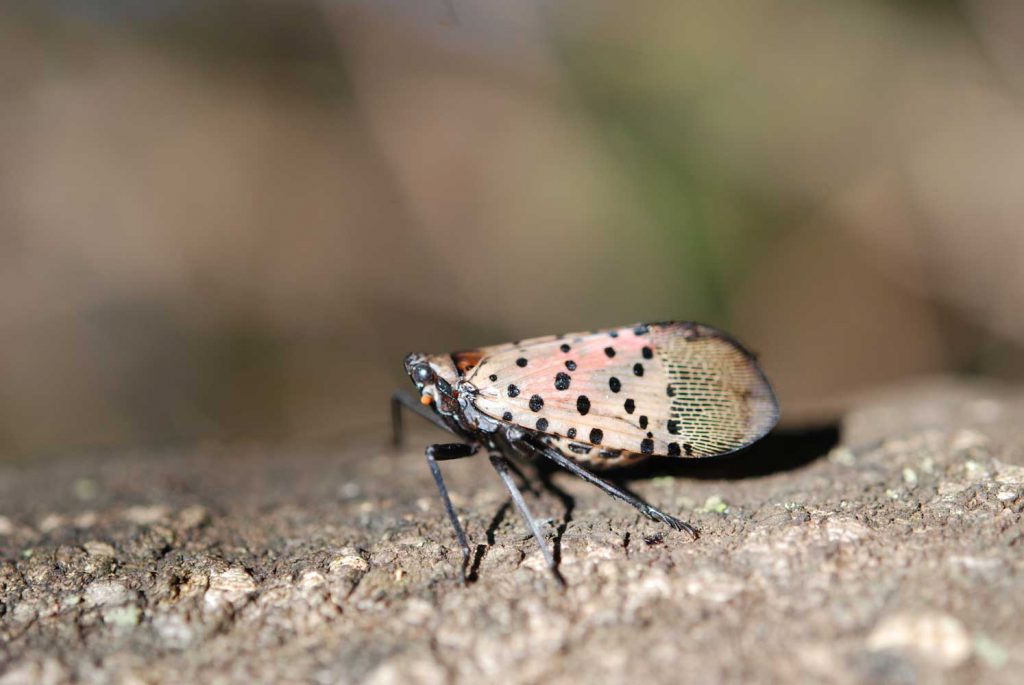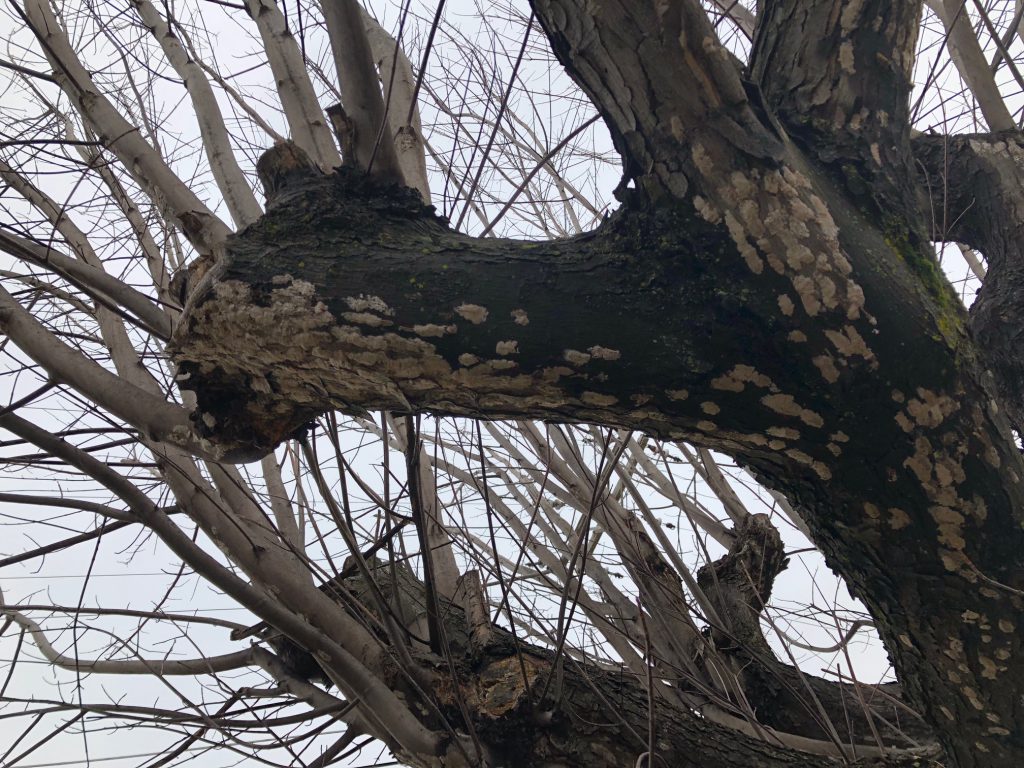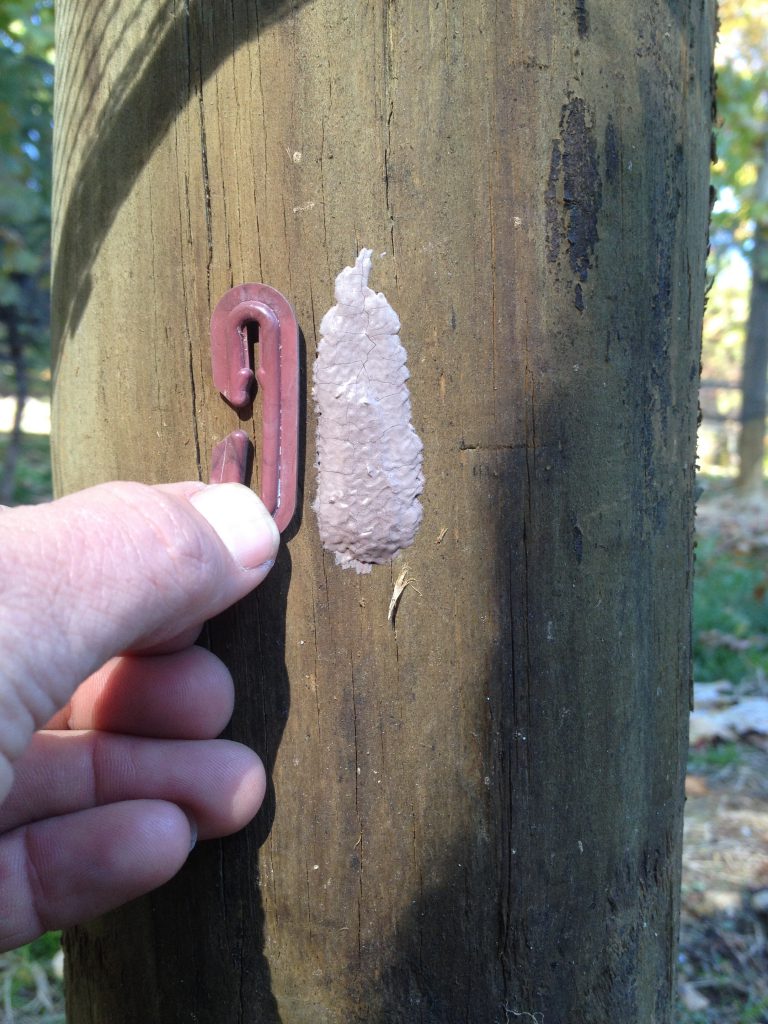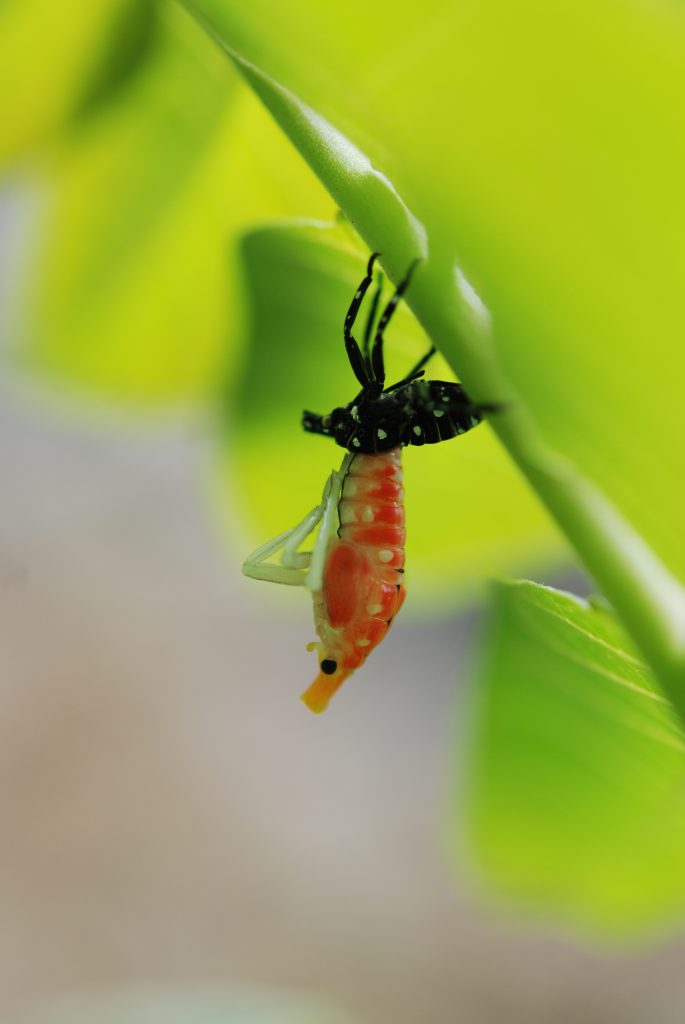Scientific name: Lycorma delicatula
What Is It?
The spotted lanternfly is a piercing, sucking insect native to Asia. Adults and nymphs pierce plants and eat sap from stems. The insects are strikingly colored and fairly easy to identify.
Is It Here Yet?
No, but spotted lanternfly is elsewhere in the United States. It was introduced into South Korea, Japan, and first found in North America in Pennsylvania in 2014. The insect was able to quickly spread throughout that state, and since has been detected in fourteen states in the eastern and central part of the country.
Why Should I Care?
Spotted lanternfly feeds on a wide variety of plants, including apples, cherries, grapes, hops, plums, walnut, and many more species. High infestations in Pennsylvania have resulted in the death of well-established grape vines. Large populations also generate enormous amounts of honeydew excretions, which can cover plants, attract other insect, and promote the growth of molds.
How Can We Stop It?
Make sure to not transport eggs, nymphs, or adults from the central and eastern states. While the adults can disperse by flying, transportation by humans is likely its fastest way of invading new areas. Adults prefer to feed and lay eggs upon tree of heaven (Ailanthus altissima), a Class C noxious weed in Washington. Avoid planting tree of heaven on your property and consider safely removing any that might be present.
What Are Its Characteristics?
- An adult is about 1 inch long, with distinct black spots on light brown or gray wings.
- Its hind wings have a distinct red and black pattern.
- A nymph is black at first, with bright white spots, and becomes red as it ages.
- Egg masses look a bit like a smear of light-colored clay and can be found on outdoor furniture, cars, trains, and plants.
- An adult also produces large quantities of honeydew, which can leave mold that looks like soot at the base of trees.
Additional Photographs






All photos are courtesy of the Pennsylvania Department of Agriculture.